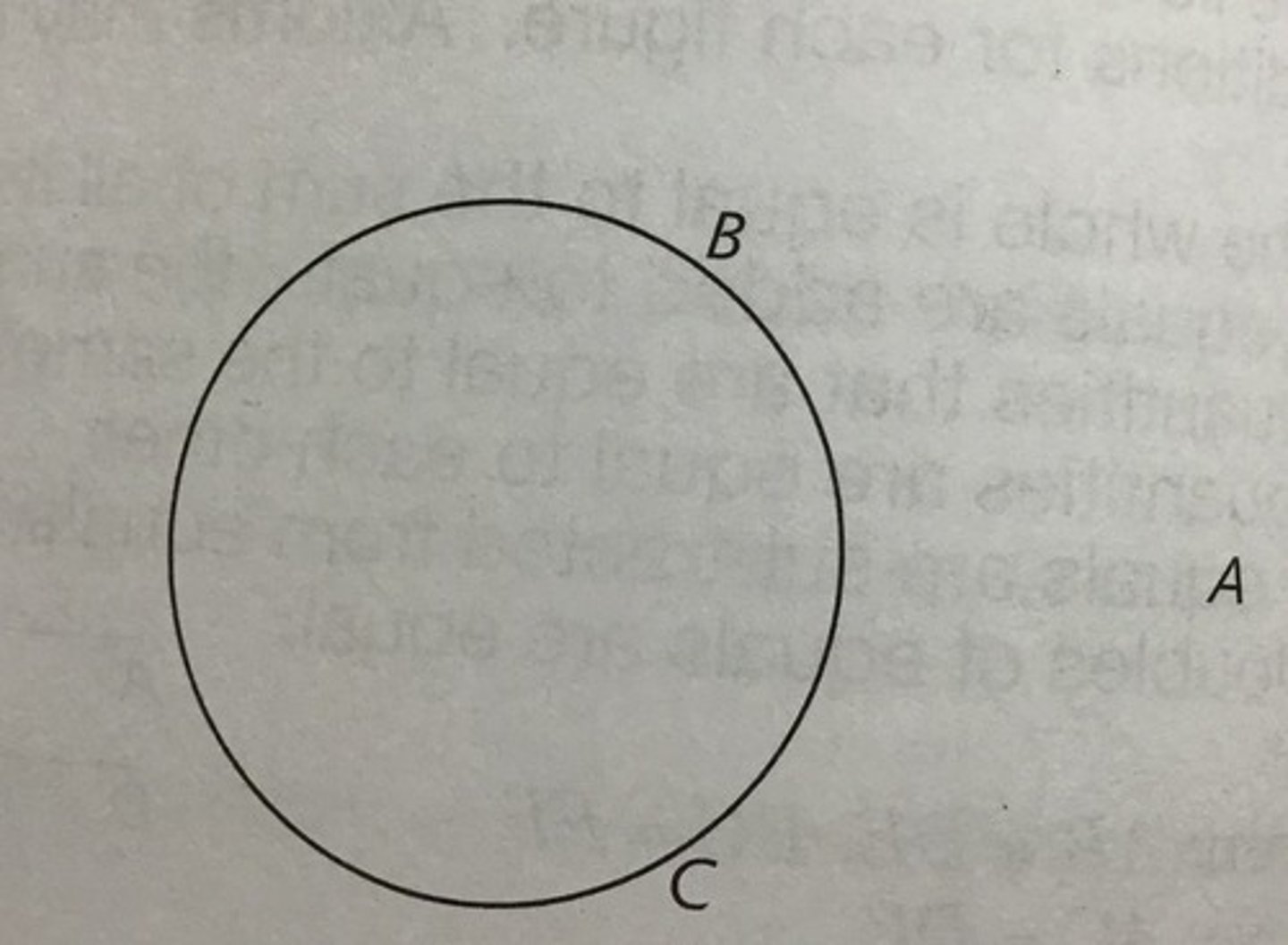Abeka Plane Geometry Test 2
1/35
There's no tags or description
Looks like no tags are added yet.
Name | Mastery | Learn | Test | Matching | Spaced |
|---|
No study sessions yet.
36 Terms
false
the whole is greater than the sum of all its parts
true
all right angles are equal
false
two angles that are complementary to the same angle or equal angles are supplementary to each other
true
a quantity may be substituted for its equal in any process
false
two straight lines can intersect in several points at one time
false
if the sum of two adjacent angles is a straight angle then they are complementary angles
false
the sum of two sides of a triangle is less than the third side
false
the sum of all the angles about a given point is a traight angle
true
two right triangles are congruent if the two legs of one triangle are equal respectively to the two legs of the other triangle
false
CPCTE can be used as a reason for why two triangles are congruent
false
the eye is a calid means for testing the truth of a construction
true
a diameter of a circle is also a chord
corollary
a geometric statement that is easily deduced from a theorem
analysis
a pre proof planning of how a complete a proof
theorem
a geometric statement that is not self evident but proven by a chain of reasoning
construction
a figure that satisfies given conditions and is drawn without instruments of measurement
postulate
a geometric statement that is accepted without proof to be true
diameter
a radius of a circle is equal to half the length of the
auxiliary
added lines in a diagram used to aid in solving proofs are called
quadrant
the arc that represents one quarter of a circle is a
a straight angle
the sum of all the angles about a point on one side of a straight line
proof or demonstration
the process of reasoning that establishes the truth of a theorem or the correctness of a construction is called a
point
a line can be bisected by but one
congruent
two geometric figures that have the same shape and size are
a straight line
the shortest line that can be drawn between two points is
vertical of opposite
any two straight lines intersect to form equal
compass
the instrument used for drawing circles is the
corresponding
in two congruent figures the equal parts are called
AB=JK BC=KL CA=LJ
If Tri ABC is congruent to Tri JKL list the three pairs of equal angles
Angle CAB = Angle FEG
Angle ABC = Angle EGF
Angle BCA = Angle GFE
If Tri CAB = Tri FEG list the three pairs of equal angles
If equals are added to equals the sums are equal
Given: AB=DE BC=EF
Prove: AC=DF

if equals are subtracted from equals the remainders are equal
Given: AB=AC DB=EC
Proven: AD= AE
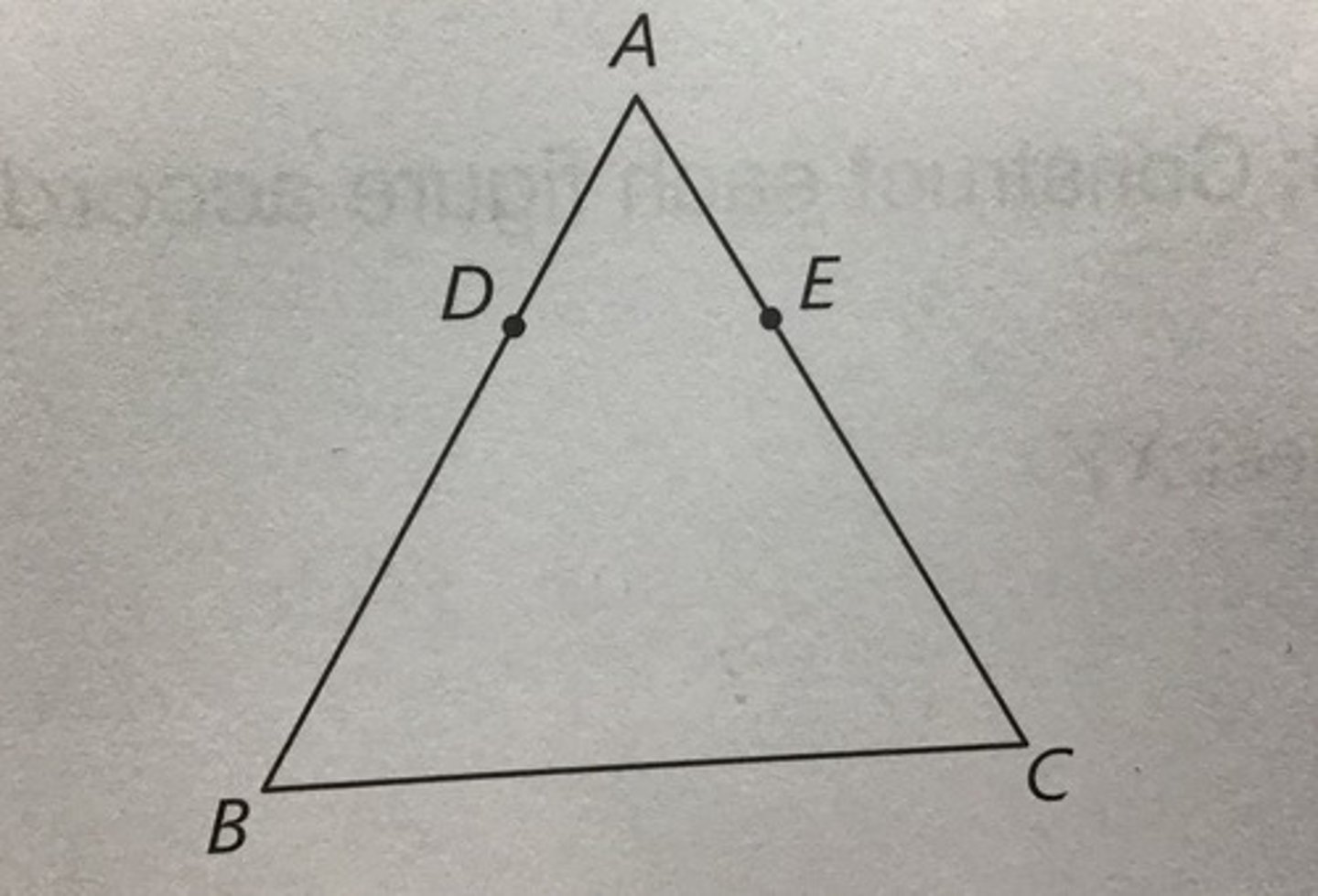
the whole is equal to the sum of all its parts
Given: Angle 1 and Angle 2 and Angle 3
Prove: Angle ABC = Angle 1+ Angle 2+ Angle 3
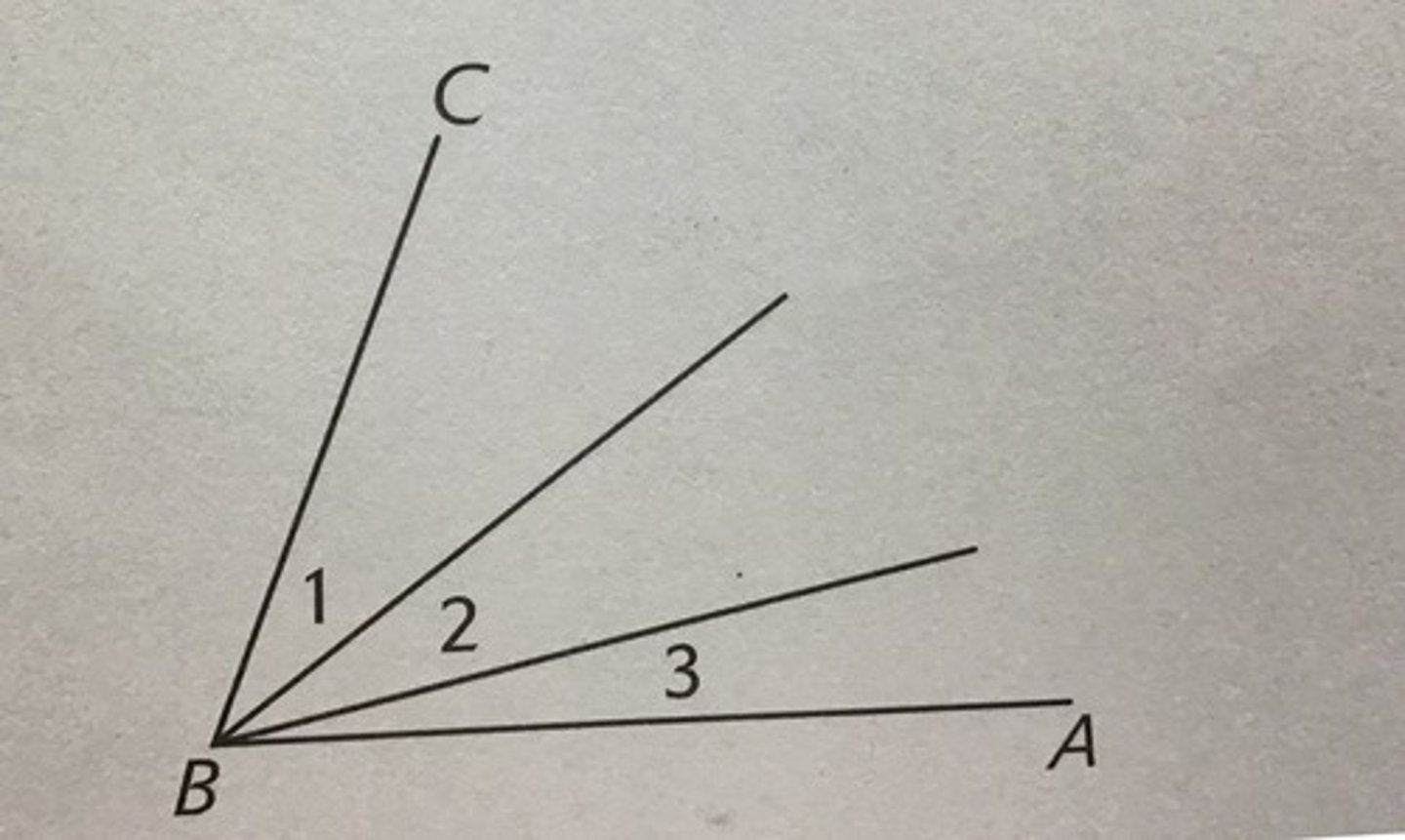
quantities that are equal to the same quantity or equal quantities are equal to each other
Given: AB= AD DC=AD
Prove: AB=DC
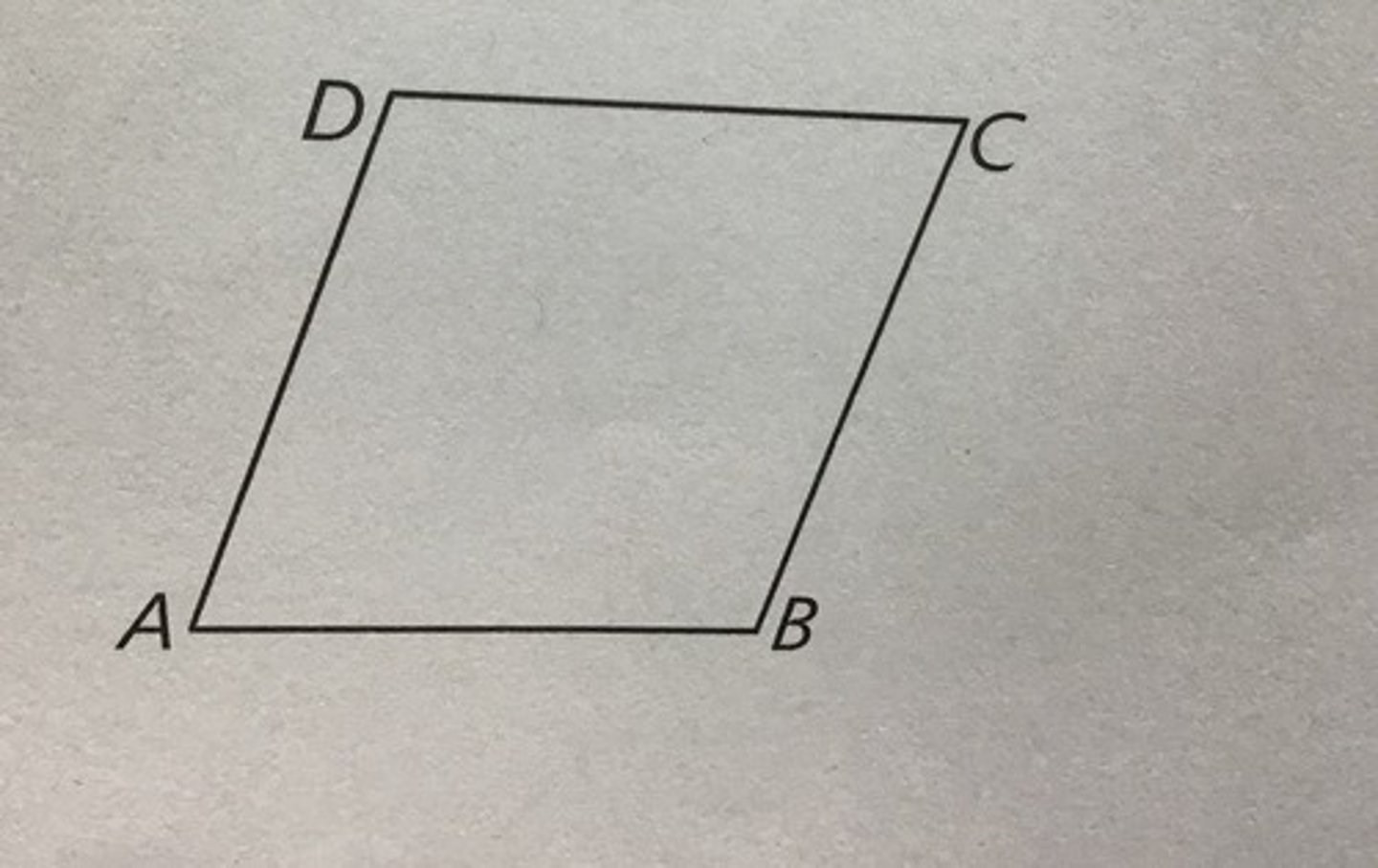
Doubles of equals are equal
Given: (all r angles) BCF=EDA ACF=FDA
Prove: Angle 1= Angle 2
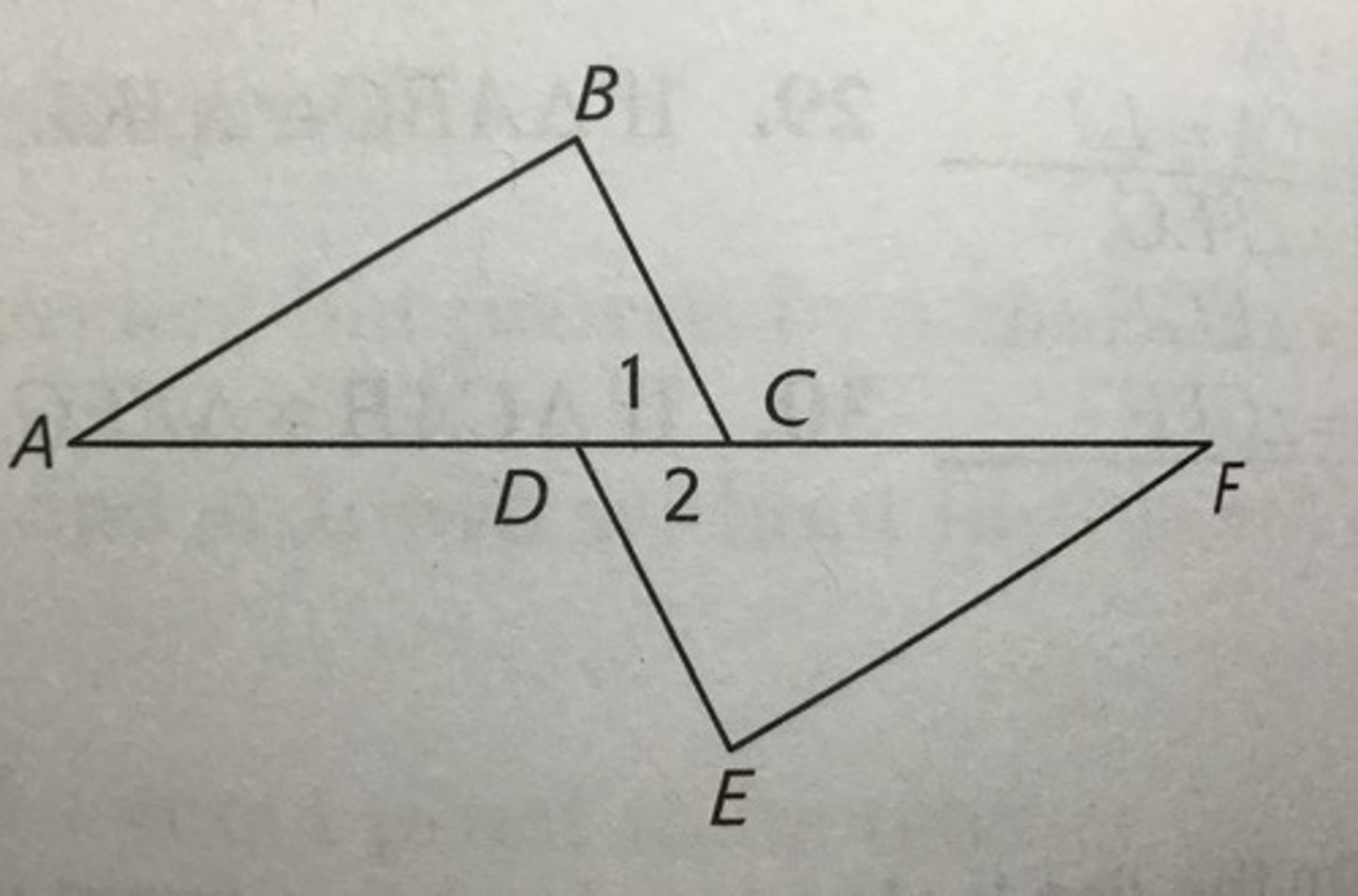
Quantites that are equal to the same quantity or equal quantities are equal to each other
Given: AC=BC BC=BA
Prove: AC=BA
